Dedication To Tyler continued...
Under Armour Performance Apparel History
Sweat Equity: 1995-96
Kevin Plank was born in Kensington, Maryland, in August 1972. He was the youngest of five boys and like his older brothers both loved and excelled in sports. Plank attended St. John's College High School in Washington, D.C., and to further his football dreams went to Fork Union Military Academy in Virginia, where he met a number of football phenoms. After Ford Union, Plank went to the University of Maryland and began playing for the school's football team. He worked his way up to special teams captain, where his experiences on the playing field led him to a rather unusual endeavor.
As a fullback at the University of Maryland, Plank soaked through several T-shirts in the course of a routine football practice. He and the other players hated the wetness and weight of sweat-drenched shirts. Plank found it interesting, however, that the tight-fitting compression shorts he and the others wore during practice (designed to keep muscles relaxed) managed to stay dry and comfortable. As a senior, in 1995, he was determined to find a solution and visited a nearby fabric store. He found a white synthetic fabric, similar in feel to the stretchy compression shorts.
Plank had some sample tees made up and tested them on fellow Terrapin players, including pal Kip Fulks, who played lacrosse for Maryland. While it seemed like a big joke to some of the football players, who thought the lingerie-like material was too silky and smooth for macho athletes, they soon changed their tune. The undergarment not only felt good against the skin but kept players comfortable and virtually sweat-free. Plank took suggestions on how to make the tees more comfortable, from sleeve length to collar size, and continually upgraded his prototype.
While other seniors were scouting post-graduation jobs, Plank was sure his product had a future. He visited New York City's famed garment district with 500 microfiber tees. Back in his grandmother's Washington, D.C.-area rowhouse, Plank, along with fellow athlete Fulks,
Drew up some preliminary plans and decided how and where to market the revolutionary T-shirts. Plank graduated from the University of Maryland in May 1996. With cash advances from credit cards and his own savings from odd jobs such as cutting grass and selling roses on campus, Plank had funds totaling $40,000 and officially launched Under Armour Athletic Apparel.
Fortunately for the young entrepreneur, he had a multitude of friends and contacts throughout both the collegiate and professional sports leagues. He began to shop Under Armour to college sports teams around the country, packing samples in the trunk of his car. Georgia Tech was Under Armour's first customer and was soon followed by Arizona State University where friend Ryan Wood played. Wood, who Plank had met during his Fork Union days, went on to play for the Dallas Cowboys and later came on board as Under Armour's vice-president of sales. By the end of the company's first year, 500 Under Armour HeatGear (sweat-resistant) shirts had been sold in various styles (amounting to about $17,000 in sales), and Plank and Fulks (who became Under Armour's VP of production) set up offices in South Baltimore along with a manufacturing facility a few blocks away.
Under Armour Taking Off: 1997-99
In 1997 Under Armour came out with several new apparel lines, each one designed with specific needs in mind. There was ColdGear (for harsh winter weather), TurfGear (for artificial turf protection), AllseasonGear (for any season), StreetGear (hats, visors, wristbands), and increasing interest in what the industry had dubbed "performance apparel." Suddenly athletes everywhere were curious about performance apparel and what it could do for them. A number of college and professional football teams jumped on the Under Armour bandwagon, since the garments seemed to give its wearers a definite edge on the playing field. By the end of 1997 over 7,500 Under Armour products had been sold.
The year 1998 proved pivotal for Under Armour; the company signed on as the official performance apparel supplier for the NFL's European teams and moved into a new 5,000-square-foot facility during the summer. Soon after, Plank sent samples of Under Armour to a Los Angeles casting director, after a friend told him about tryouts for a new football movie to be distributed by Warner Bros. The film, called Any Given Sunday, was being directed by Oliver Stone and starred Al Pacino, Cameron Diaz, and Jamie Fox. The company providing the wardrobe for Any Given Sunday was Sports Robe, which took an immediate liking to the Under Armour garments and used them in the film.
Sports Robe also signed Under Armour to supply garments for another football-themed major motion picture called The Replacements, starring Keanu Reeves and Gene Hackman, also produced by Warner Bros. Filming for The Replacements took place in Baltimore in PSINet Stadium where the Baltimore Ravens played, and it just so happened that Under Armour's headquarters was located across the street. When the movies were released, Under Armour's virtually unknown logo was prominently displayed in several scenes and immediately boosted sales. The same was true when Under Armour signed with Eastbay and became the catalogue giant's fastest selling "soft" goods product line.
At century's end, three-year-old Under Armour had sold more than 250,000 garments, outfitted eight Major League Baseball (MLB) teams, almost two dozen NFL teams, four National Hockey League (NHL) teams, dozens of NCAA teams, and both sponsored and outfitted the U.S. archery team at the 2000 Summer Olympic Games in Sydney, Australia. Sales had topped the $1 million mark for the first time and Plank was finally able to pay himself a regular salary.
No Chinks in the Armour: 2000-03
In 2000 Under Armour outfitted the new XFL football league and gained considerable attention during the league's debut on national television. Though the XFL later folded, the exposure helped put Under Armour gear into 1,500 retail outlets throughout the United States. To keep up with demand, the company relocated to a new 14,000-square-foot site in October and by early the next year had become the official outfitter of MLB, the NHL, and USA Baseball. Even law enforcement and military personnel were wearing Under Armour.
Under Armour earned accolades from several sources in late 2001, including being named Apparel Supplier of the Year from Sporting Goods Business, and a Victor Award for the best New Product Launch from the Sports Authority, the nation's largest sporting goods chain. Plank, too, was lauded for his achievements, as one of Business Week's top "under thirty" business professionals. The company also revamped its web site, featuring three-dimensional views of some of its apparel, a more extensive product listing (including ski gear), and locations of both domestic and international dealers. Under Armour finished 2001 with sales of more than $25 million and 59 employees.
In 2002 Under Armour began testing its women's apparel line, hoping to duplicate its immense success with male athletes. The company had also become the official outfitter of Major League Soccer and the U.S. Ski Team. Under Armour's first television ad (the first print ad appeared in 1999) aired in August, during collegiate football's Kickoff Classic between Plank's alma mater, the University of Maryland, and the legendary Notre Dame. The ads ran on both ABC and ESPN for several weeks. By the end of the year, Under Armour was available in over 2,500 retail outlets and had sales of $55 million. The company had hired around 100 new employees during the year, had moved to larger headquarters on Baltimore's Inner Harbor, and added warehouse space of 65,000 square feet.
By 2003 sales for Under Armour were expected to breach $110 million and it was rumored the company had become a takeover target. New products that debuted during the year were underwear and golf apparel; Under Armour had also become a favorite among teenaged athletes and was considered "cool" for every day wear at middle and high schools. Even the collegiate and professional athletes who wore Under Armour in ads did it for the product, since the firm never paid endorsement fees. Under Armour got around the issue by not printing the athletes' names (figuring everybody knew anyway), and the "models" willingly endorsed the apparel because they truly believed in it.
Accepting No Substitutes: 2004 and Beyond
While Under Armour was a remarkable success story, perhaps there was one hiccup: Plank had been unable or unwilling to patent his performance wear. Imitators had come out in full force by 2004 and though Plank had not seemed unduly alarmed in 2001, commenting to Sports Illustrated that the knockoffs "validated" Under Armour, the imitators had begun to take their toll. Reebok International's "Play Dry" and Nike Inc.'s "Pro Compression" performance gear lines were putting chinks in Under Armour; then Reebok inked an exclusive deal with the NFL, while Nike secured the new MLB contract. While Under Armour still dominated the performance gear market, which analysts expected to top $200 million by 2005, both Reebok and Nike had considerable clout and a no-holds-barred approach to doing business. Would the Goliaths get the upper hand? Or would Kevin Plank's David still reign supreme in the performance gear industry? Only the world's athletes knew, for they held the key to Under Armour's future.




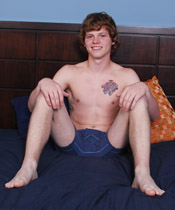
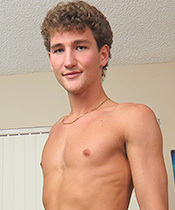
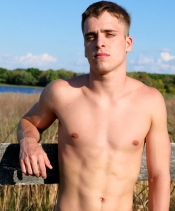
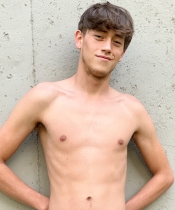

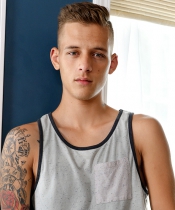





 As one of your students, i would like to suggest that "revealing photos" of models in the various attire surely would have to beat referring back to my favorite standby -- my tattered Sears & Roebuck catalog. Though yellowed with age and a few poorly aimed cum shots that really got away from me,
As one of your students, i would like to suggest that "revealing photos" of models in the various attire surely would have to beat referring back to my favorite standby -- my tattered Sears & Roebuck catalog. Though yellowed with age and a few poorly aimed cum shots that really got away from me, I accept the fact that men are very visual naturally. Men need to see the "pot of gold at the end of the rainbow" to further enhance their fantasies and bring them to full fruition while minmizing painful friction.
I accept the fact that men are very visual naturally. Men need to see the "pot of gold at the end of the rainbow" to further enhance their fantasies and bring them to full fruition while minmizing painful friction.  could be fully appreciated even at the back of the room. Thanks for the many, many pleasant memories and sightings. The information gleaned from this class will be cherished forever and become an integral part of my daily life, henceforth.
could be fully appreciated even at the back of the room. Thanks for the many, many pleasant memories and sightings. The information gleaned from this class will be cherished forever and become an integral part of my daily life, henceforth.